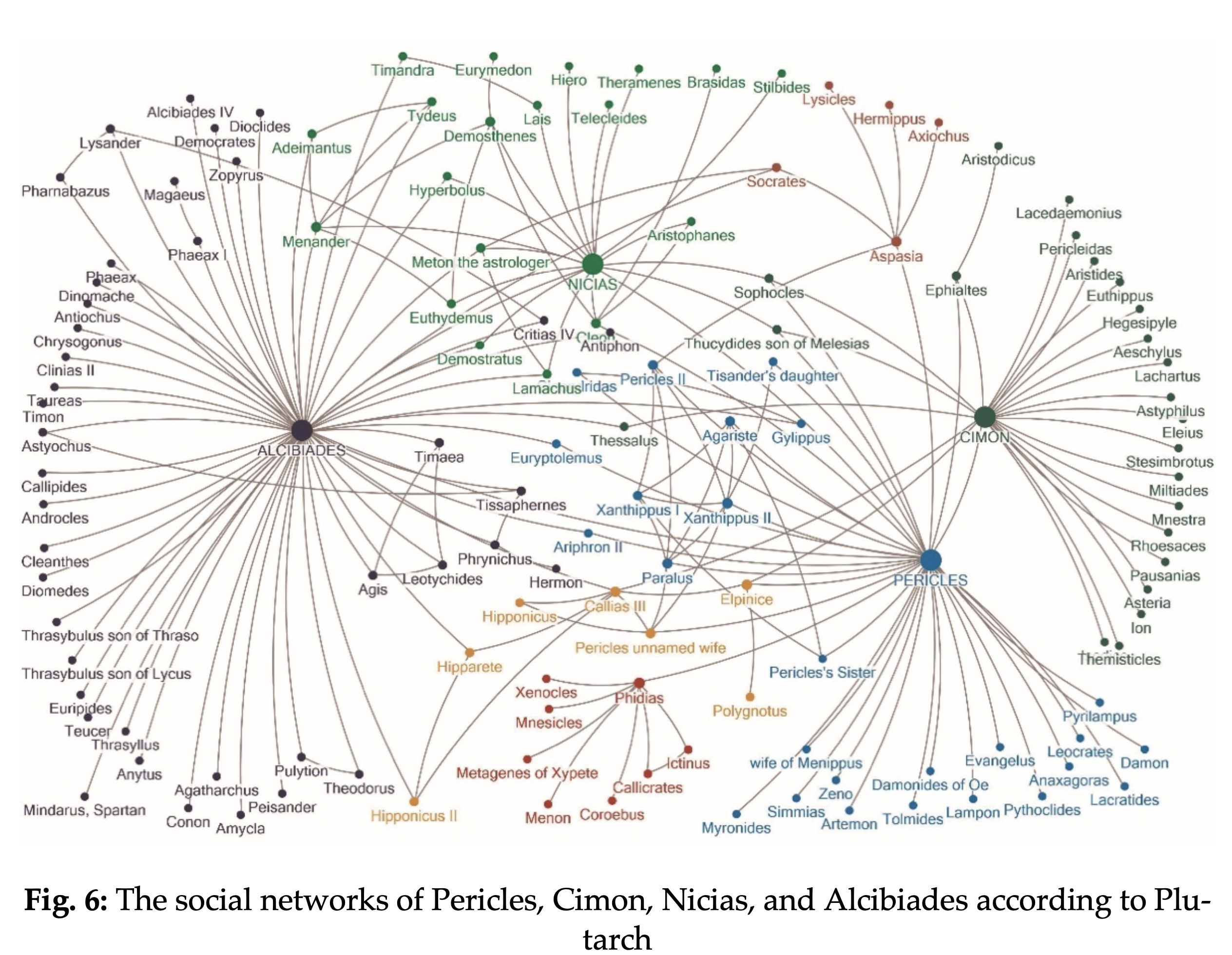Athens as a Small World
DOI:
https://doi.org/10.25517/jhnr.v4i0.84Keywords:
Athens, Pericles, betweenness, ego-networks, biographies, women, small worldAbstract
Athenian political life in the 460’s and 450’s BC centered on conflict between the Oligoi and the Demos, whose positions were articulated by Cimon and Pericles, and then Cimon’s successor, Thucydides son of Melesias. Through the building program debate in the ecclesia, and the success of Pericles over his opponent who was ostracized, the fissure between clusters was resolved, and the Demos got the upper hand. In 1998, Anthony Podlecki wrote a book called Perikles and his Circle, and before that Philip Stadter (1991) wrote an influential article entitled “Pericles Among the Intellectuals.” To their work, we now add a formal social network analysis to study the position of Pericles in the social network of intellectuals, artists, politicians, and cultural creatives in the mid-5th century BC. The study shows clusters of varying size and relative positions in which boundaries were fluid and there was much interaction. Women feature highly in betweenness centrality. The data set includes 328 nodes, and 754 edges, built around the ego-network of Socrates, of which Pericles, political figures, and the intellectuals are members. The data consists of an edge list drawn from all of Plato, Plutarch’s lives of Cimon, Pericles, Nicias, and Alcibiades, plus Xenophon’s Memorabilia and Symposium, plus Lysias’s speeches and some of Diogenes Laertius Book 2 on Socrates.

Downloads
Published
How to Cite
Issue
Section
License
A Creative Commons Attribution-NoDerivatives 4.0 (CC BY-ND 4.0) license applies to all contents published in JHNR. While articles published on JHNR can be copied by anyone for noncommercial purposes if proper credit is given, all materials are published under an open-access license with authors retaining full and permanent ownership of their work. For details please consult the Open Access and Copyright Notice.

